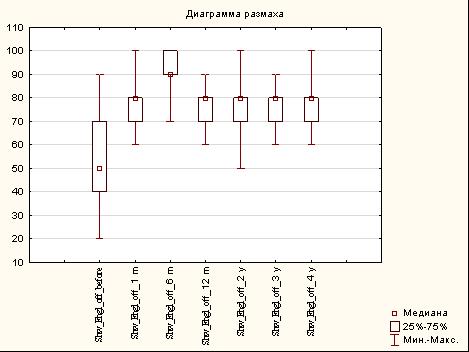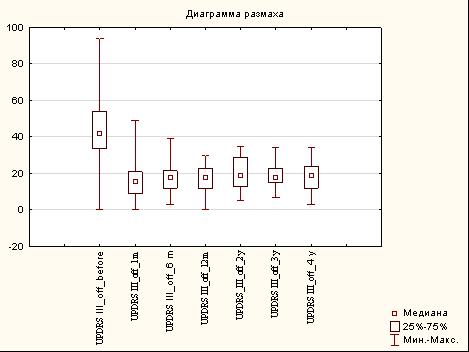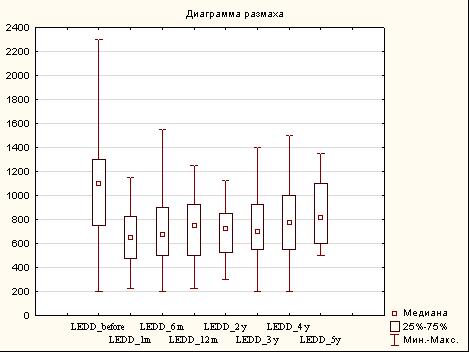Category: Surgical Therapy: Parkinson's Disease
Objective: To study the efficiency and SE of DBS in PD patients in Republican Research and Clinical Center of Neurology and Neurosurgery in Belarus for 10 years
Background: Deep brain stimulation (DBS) is effective surgical treatments in advanced Parkinson’s disease (PD) improving motor symptoms and treatment-related motor complications [1]. DBS is a minimally invasive effective treatment of PD with invertible effects but may be complicated by side effects (SE) that is related to the chronic stimulation [2]. The results of DBS in PD patients depends on the experience of an interdisciplinary team of the DBS center
Method: 77 PD patients have been selected and undergone DBS since 2011. 40 male and 37 female, mean age 55,5±8,2 years. There are 55 patients – II stage of H&Y, 22 – with III-IV. 54 patients with DBS STN (subthalamic nucleus); 10 – DBS Gpi (globus pallidus pars interna); 3 – DBS Vim (nucleus ventralis intermedius in thalamus), 10 patients with simultaneous implantation of two pairs of electrodes in STN and Gpi, 1 – with electrodes in STN and PPN. To assess the neurological status was used UPDRS, Shwab-England; to assess the changes of drug therapy was used LEDD
Results: The postoperative follow-up period was more than 5 years in 35 patients. The score by III part of UPDRS in the off period and LEDD (p <0.0001) decreased in 54 patients (70%) with DBS STN for 12 months of follow-up.
Increase the score of Shwab-England in off-med in 4 years ANOVA χ2 = 23,485, p < ,0007 (Figure 1). Decrease the score of UPDRS III in off-med in 4 years ANOVA χ2 = 25,680, p < ,0003 (Figure 2). Decrease the score of LEDD in 5 years ANOVA χ2 = 15,286, p < ,033 (Figure 3).
In patients with two pairs of electrodes we could switch to another electrodes for reduce more severe symptoms.
SE: dysphonia/dysarthria in 5 patients, gait and balance disturbances (freezing) in 12 patients, weight gain (mean 10 kg) in 45 patients, dementia in 2 patients, depression and obsessive-compulsive disorders (OCD) in 5 patients with DBS STN
Conclusion: DBS is the effective treatment of motor symptoms in PD patients with decreased LEDD. Some SE required adjustment of neurostimulation parameters and drug administration. We have good team’s experience in Belarus comparable with other DBS center
References: 1. Ferreira J., Katzenschlager R., Bloem B.R. Summary of the recommendations of the EFNS/MDS-ES review on therapeutic management of Parkinson’s disease. EFNS European Journal of Neurology. 2013;20:5–15.
2. Deuschl G. et al. Deep brain stimulation: postoperative issues. Movement disorders. 2006;21(14):219–237
To cite this abstract in AMA style:
A. Buniak, V. Alexeyevets, S. Likhachev. The results of DBS in patients with Parkinson’s disease for 10 years in Belarus [abstract]. Mov Disord. 2022; 37 (suppl 2). https://www.mdsabstracts.org/abstract/the-results-of-dbs-in-patients-with-parkinsons-disease-for-10-years-in-belarus/. Accessed December 4, 2025.« Back to 2022 International Congress
MDS Abstracts - https://www.mdsabstracts.org/abstract/the-results-of-dbs-in-patients-with-parkinsons-disease-for-10-years-in-belarus/



